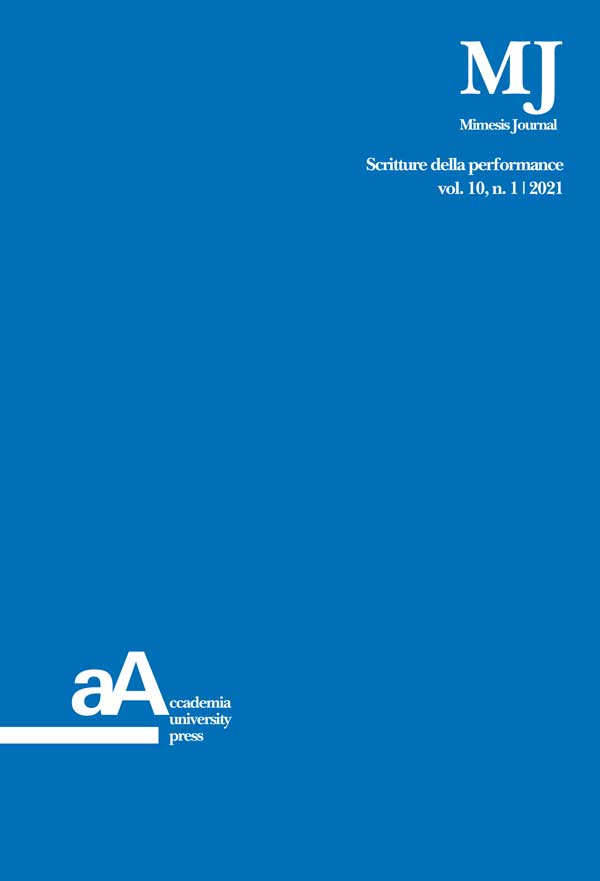"I due gemelli veneziani" del Teatro Stabile di Genova
Appunti per uno studio sonoro
DOI:
https://doi.org/10.4000/mimesis.2204Abstract
The article, which aims to place itself in the space of encounter between theatre studies and Sound Studies, develops the analysis of the sound recordings, found in the archives of the Teatro Nazionale in Genoa, of four takes of I due gemelli veneziani (directed by Luigi Squarzina, starring Alberto Lionello) that cover the entire life of the production (1963-1978). By enhancing the documentary specificity of the sound materials and introducing elements of electroacoustic analysis, the study aims to discuss the performance as an object of dynamics of continuity and alteration – with particular attention to the progressive transformations in relation to the response of the different types of audience – with particular interest in Lionello’s voice, the acoustically most emblematic element. A technical analysis allows us to appreciate the rhythmic, timbre and prosodic diversification with which the actor characterises the two characters he plays and to verify his metamorphosis over the years. The case study of I due gemelli turns out to be particularly suitable to demonstrate the potentiality of materials usually neglected, especially with regard to “traditional” performances and to highlight the consequences of the text’s embodiment in the actor’s body over a long period of time: these objectives allow to open a new front concerning the use of sound sources within the strand, long pursued by ORMETE Research Group, concerning the creation and enhancement of oral sources for Performance Studies.


